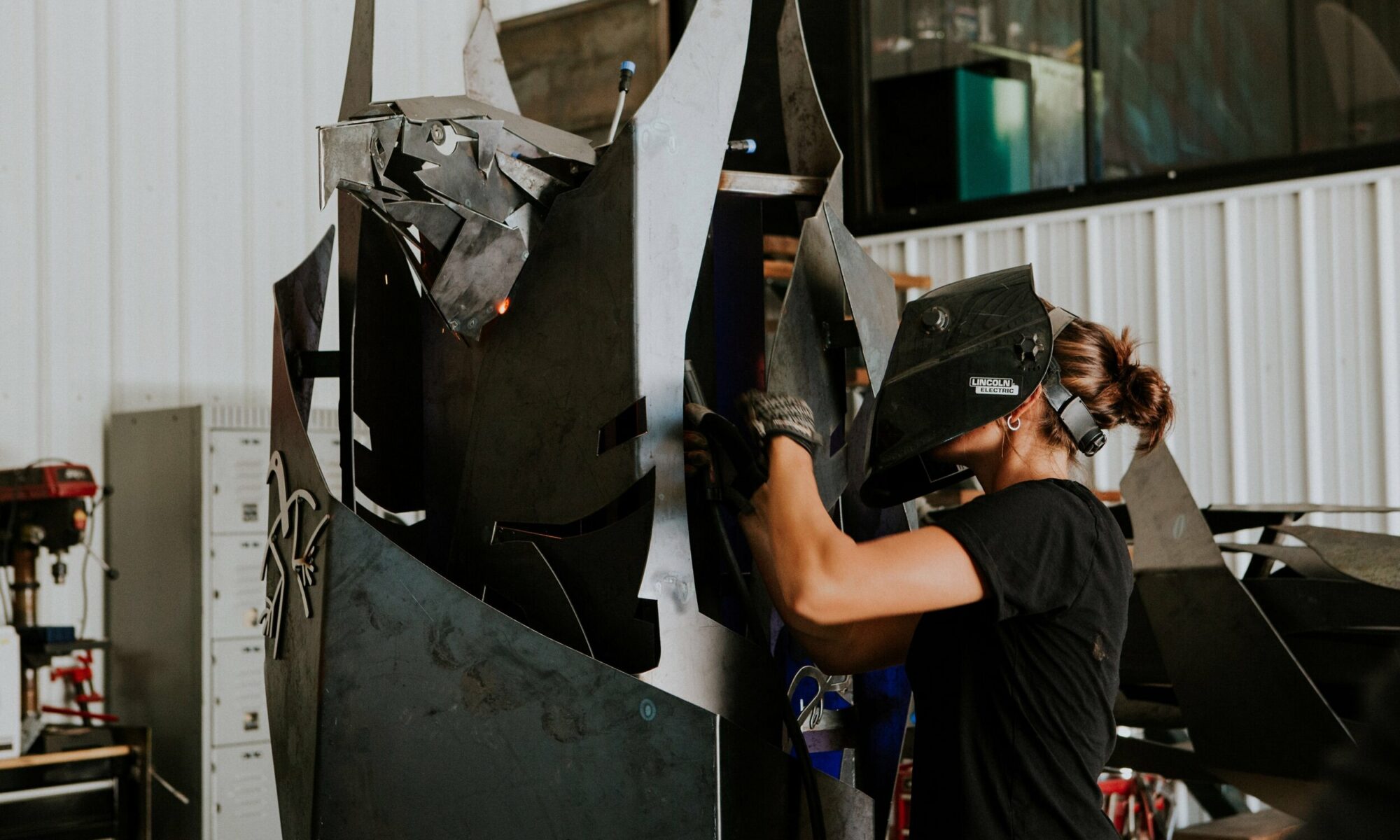
An artist and an award that rises above
There was a time when Kathryn Corbiere’s path veered beyond Manitoulin Island. She dabbled – trying out different post-secondary programs and sports. She went to Ottawa, Toronto and South Carolina.
“I just couldn’t find that thing that clicked with me,” said the metal sculptor, who created the statues awarded to the seven honourees of this year’s Annual Testimonial Dinner Honour Roll.
From a young age she loved outdoor pursuits — hunting and fishing with her dad and uncles. Living in the city, she missed those adventures. “Growing up here, everything is so nature driven,” said Corbiere of Manitoulin.
“I just had to come home. I just couldn’t imagine living anywhere else,” she said.
So at about 19, Corbiere returned to the M’Chigeeng First Nation on Manitoulin where she became a welder. It was the decision to learn a trade that would finally spark the artist in her. She founded her studio, One Kwe (meaning ‘woman’ in Ojibwe) Modern Fabrications.
That’s the thing about her life and career, said Corbiere, 34. Without experiencing paths and places that didn’t fit, she might never have arrived at the work she does now in the surroundings that inspire her creations. “A lot of my work comes from nature. That’s where I find my inspiration.”
Like Corbiere’s celebrated larger works, the statues she designed for PPF’s awards are rooted in her natural surroundings, specifically the woods on her family property. Walking there, she noticed that the pine trees stood out amid the other growth. Fewer in number, they nevertheless rose higher, like the award recipients.
PPF’s award statues have gone through a few iterations, but had not changed since 2017.
Corbiere describes her metal art as both literal and abstract. She said she enjoys mixing the two formats to add depth of meaning to her work. Most of her pieces are mild steel mixed with stainless. Some works incorporate stone or wood.
Her representation of a piece of harvested birch bark is on display at the Toronto Stock Exchange office. The approximately 12-foot-high sculpture references the historic trading relationships between Indigenous peoples and also recognizes efforts toward economic reconciliation between Indigenous and settler Canadians.
Corbiere’s sculpture Grandmother Sturgeon (Nookomis Gitche Name’ Kwe) swims along a bed of river stones in the reconciliation garden at Kelso Beach Park in Owen Sound. The strength of the sturgeon, she said, mirrors that of her own two grandmothers, both residential school survivors.
More of her creations can be seen around Ontario, including Sudbury and Collingwood, as well as her own community.
It is particularly resonant for Corbiere when her pieces stand in nature. That is the case with a windswept pine near the entrance to Highway 69, a highly visible, outdoor location.
“It’s just one of those proud pieces,” she said.
In 2018, a loan from Waubetek Business Development Corporation, allowed Corbiere to build a standalone studio on an acre severed from her parents’ land.
She speculates that her creative impulses could have originated in the time she spent at her mother’s workplace, the Ojibway Cultural Foundation, where some of Corbiere’s own work now stands.
“You don’t really know what you’re influenced by until you try something yourself,” she said.
She credits an early collaborator, Toronto-based artist Kwest, whose pieces are created from metal, wood, canvas and stone, as an important influence. Manitoulin writer and environmental artist Sophie Edwards is a key support in helping her write proposals and finding the words to describe her work.
As much as Corbiere relishes the solitude of her studio and her time in nature, her life on the island is full of family and community.
She lives in Little Current, the town at the end of the bridge that connects Manitoulin to the mainland. Corbiere’s wife Natalie Hastings bought the house there before the two lived together. It’s about 20 minutes from the One Kwe studio in M’Chigeeng First Nation.
“I would love to move back to M’Chigeeng,” said Corbiere.
“My shop is down the street from aunts and uncles and my grandpa and there’s just family everywhere. I’m very fortunate to have a large family on both sides. That connection is definitely what Manitoulin is to me – home and nature and just so beautiful.”


